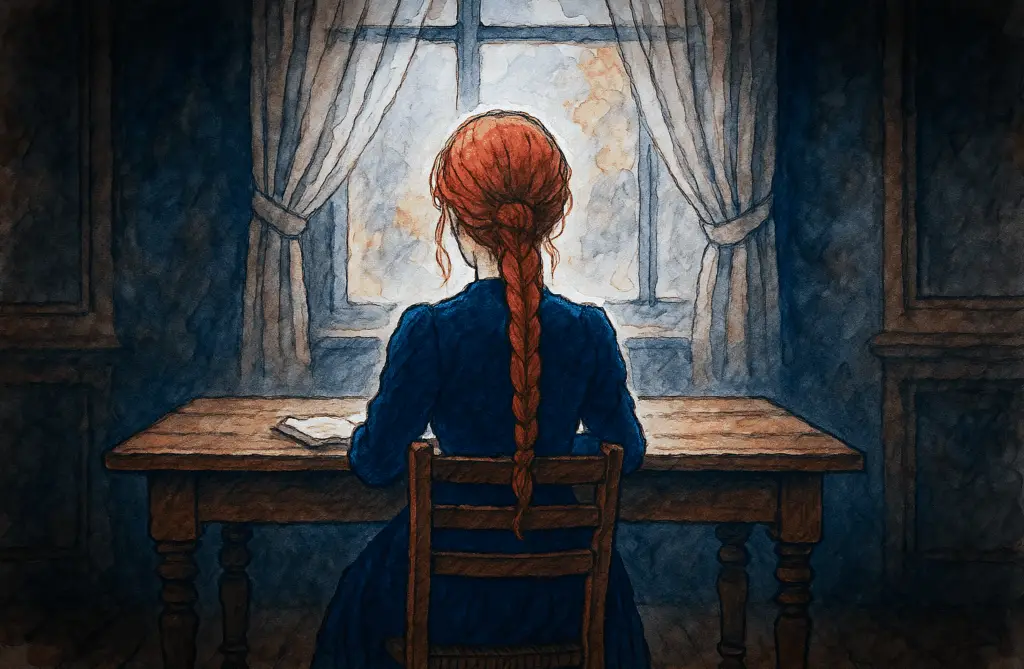
TO MY CHILDREN
It is because of you, my dear children, that I found the courage to complete these Memoirs—a work I began long before your birth and abandoned twenty times. I took a solemn pleasure in recounting the glorious details of your parents’ lives and deaths. While other books might have informed you of their distinguished deeds, I believed that a simple account from your mother would inspire a more tender and filial sentiment for their honourable memory. I also felt duty-bound to pay homage to their brave comrades-in-arms.
Yet, how many details have escaped me! Without notes, I relied solely on the vivid impressions these events left upon me. Far from writing a complete History of the Vendée, I have not even recounted all that occurred when I witnessed the Civil War. These countless omissions fill me with regret. I could only—and wished only to—write what I remembered with perfect clarity. Out of simple ignorance, I often remain silent or merely hint at facts, actions, or persons deserving of full praise. My heart will find peace only if others, better informed than I, render them their due justice. Since I could know well only what concerned my parents and friends, I limited myself to reporting, with absolute truth, everything I remembered according to my impressions at the time.
Upon completing my work, I had it read by several trusted members of our army. They corrected errors and added pertinent facts to my narrative. This necessitated a revision to incorporate their notes into the text, which was otherwise burdened with unnecessary details and written in a diffuse, incorrect style. I then entrusted it to Mr. Prosper de Barante, whose friendship led him to correct it while preserving the simplicity that befits truth. The description of the country in the third chapter is entirely his.
DONNISSAN DE LA ROCHEJAQUELEIN.
This 1st of August, 1811
My Birth
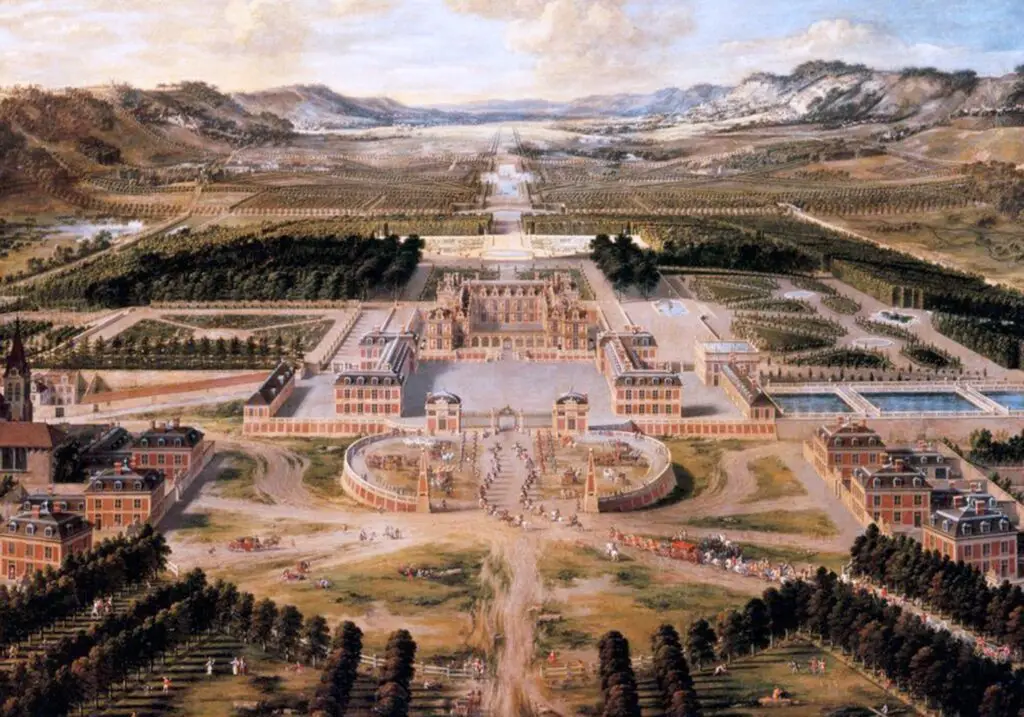
I was born in Versailles on October 25, 1772, the only daughter of the Marquis de Donnissan, a gentleman of honour to Monsieur (1).My mother, daughter of the Duke of Civrac, served as lady-in-waiting to Madame Victoire (2). This princess’s extraordinary kindness—I dare say, her friendship—made her the protector of our entire family. I have the honour of being both her goddaughter and that of the king.
I was raised in the Palace of Versailles until October 6, 1789, when I left in the carriage of the Mesdames (3), who followed the procession of the unfortunate Louis XVI to Paris. They obtained permission to stop at Bellevue under the guard of Parisian troops.
The early calamities of the revolution deeply affected my mother, who foresaw its terrible consequences with painful clarity. She requested permission from Madame Victoire to retire to her estates in Médoc. After my father secured Mesdames’s approval, we departed at the end of October.
From my childhood, I was intended to marry the Marquis de Lescure, who was born in October 1766. He was the son of my mother’s sister, who died in childbirth (4). When his father died in 1784, he left him 800,000 francs in debt, which led to the breaking of our engagement. Most of his fortune was then in the hands of the Countess de Lescure, his grandmother. Despite his advisors urging him to reject his father’s inheritance, both he and his grandmother honourably chose to accept all the debts. Through careful management of their expenses, by the time he was twenty-four, M. de Lescure had reduced the debt to 200,000 francs and secured an annual income of 80,000 francs. This financial recovery made it possible for my parents to renew our marriage plans—an arrangement that both M. de Lescure and I had long hoped for.
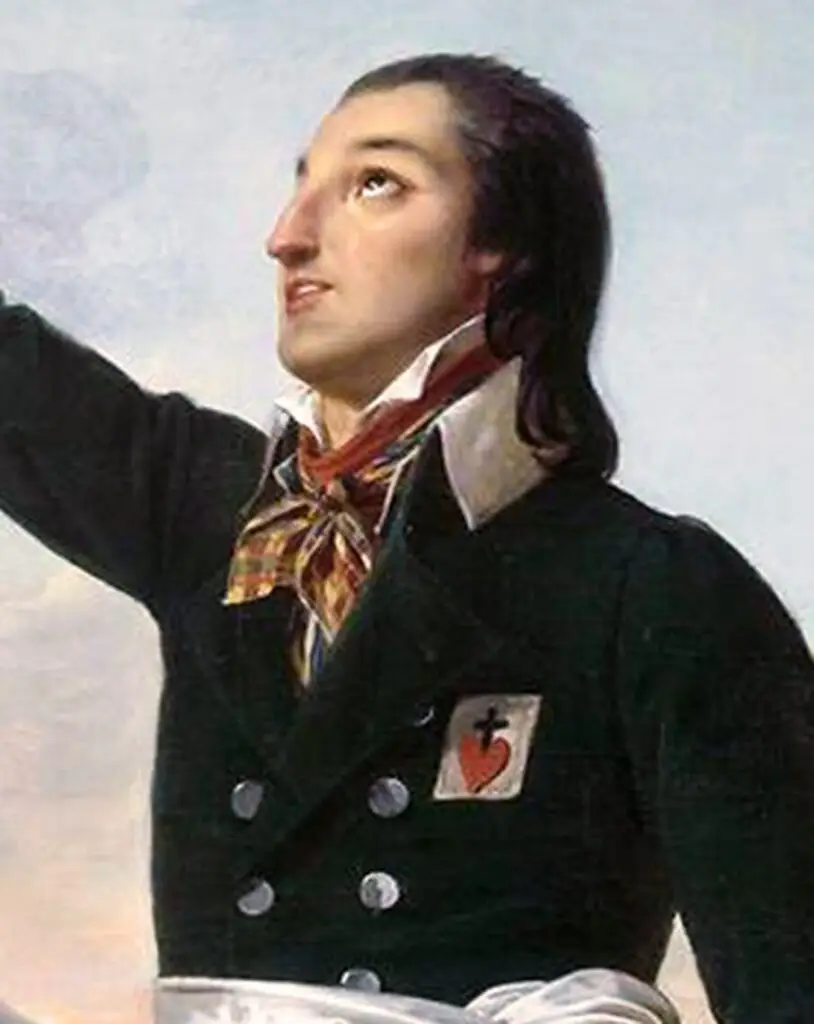
M. de Lescure entered the Military School at the age of thirteen and left at sixteen. Among the young men of his age, none were more learned, virtuous, or perfect, yet he was so modest that he seemed ashamed of his own merit and thus tried to hide it. He was shy and awkward. At first glance, though he was very well-proportioned and handsome, his manners and old-fashioned dress made him somewhat unappealing. He was born with intense passions. However, despite the general example and having a father of very disordered morals before him, he maintained perfectly correct conduct. His fierce piety protected him from the contagion and insulated him in the midst of the court and society. He took communion every fifteen days. The habit of constantly resisting his inclinations and external temptations made him somewhat unsocial and reserved. His ideas were firmly fixed in his mind, and sometimes, he showed a stubborn attachment to them. However, he was perfectly gentle; he neither had fits of anger nor even showed impatience. His temper was always even, and his composure unalterable. He spent his time reading, studying, and meditating, not out of vanity but because he enjoyed it. Please allow me to cite an example.
One day, he was at the Duchess of Civrac’s, our grandmother, and, as was his habit, he had taken a book instead of joining the conversation. My grandmother admonished him, saying that if the book was so interesting, he ought to read it aloud.
He obeyed. After half an hour, someone approached him and exclaimed: “But it’s in English! Why did you not say so?”
He replied, looking embarrassed: “My dear grandmother doesn’t know English, so I had to read it in French.”
His father was, at heart, a good man. Unfortunately, he indulged in debauchery and gambling. He had, for a companion in his dissipation, the old governor of his son. Yet the son had something so remarkably rational and gentle about him that they would confess their faults to him, seeking advice and comfort. Despite this role reversal, he always maintained a respectful love for his father.
Coalition of Poitou
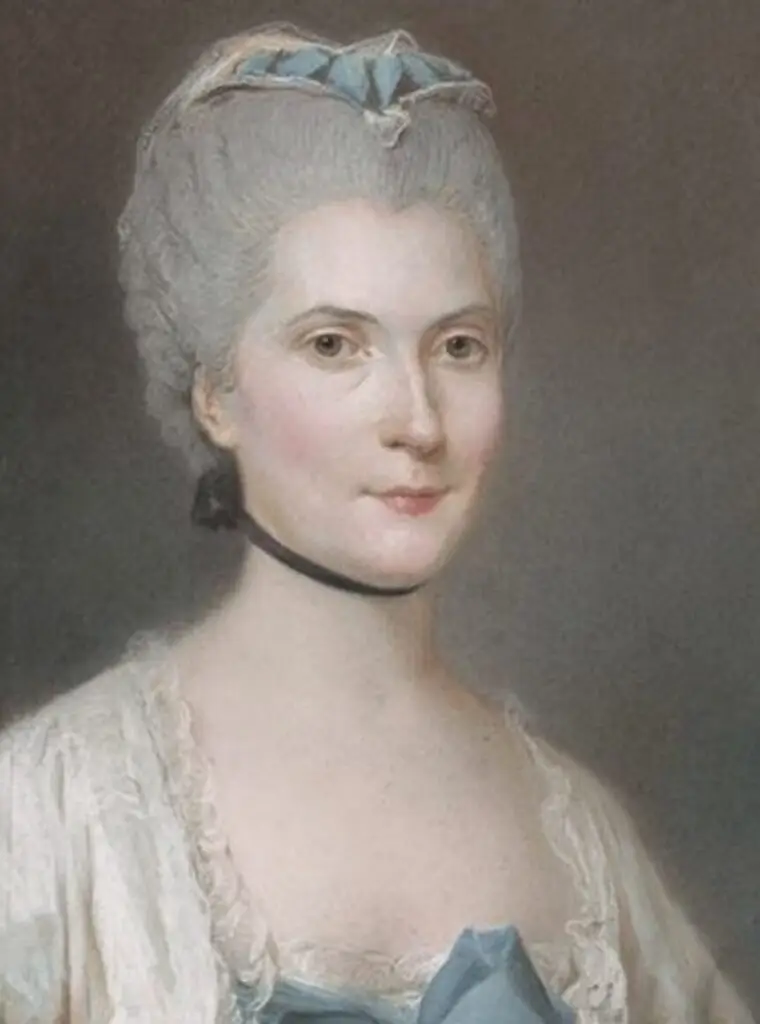
M. de Lescure came to my parents’ home in June 1791. He was part of a coalition formed in Poitou, which was quite significant and could have mustered thirty thousand men. Almost all the gentlemen of the region had joined, and they felt they could also count on a large part of the province’s inhabitants. Subsequent events were to prove them right. There were two regiments on their side, one forming the garrison of La Rochelle and the other in Poitiers. On a given day, the plan was to pretend orders from the government; the regiments would unite, and, in tandem with all the gentlemen, they would join another coalition that was to take the Lyon route and wait for the Princes then in Savoy (5). The king’s flight and his arrest disrupted all these plans.
M. de Lescure, upon learning of the king’s departure, left us to take his post. He returned a few days later because the nobility of Poitou, perceiving that the coalition’s purpose had failed, resolved to emigrate like the others. This decision was not well thought out since this coalition had been agreed upon among all the gentlemen themselves. Far from being persecuted on their lands, many had become commanders of the National Guard in their parishes, and every day, the peasants came to them asking to be armed against the patriots (6).
The Princes knew of this situation and did not favour the coalesced Poitevins emigrating, but the young men were determined to follow the general sentiment. They were strongly urged to stay behind, where they could be useful to the king. Having the good fortune to live in a loyal province, they were told they should not leave it. The Poitevin gentlemen would listen to nothing. They even refused to wait for the return of the two people who had gone to get the definitive orders from the princes. Thus, the entire Poitou coalition was dissolved. They emigrated en masse, forcing those with different opinions to follow the others. M. de Lescure left Gascony with the Count of Lorges, our first cousin. They took many risks leaving France and were stopped at the borders. They had to take smugglers as guides and go on foot by indirect routes.
M. de Lescure, the day after he arrived in Tournai, learned that his grandmother had suffered an attack of apoplexy (7) and was near death. He asked for permission from the leaders of the emigrants to go back to Poitou, which, being granted, he returned to Madame de Lescure’s side. Seeing that her condition still had some hope of her life being prolonged, he thought of rejoining the emigrants but wished to see me again first and to spend twenty-four hours with us.
When M. de Lescure wanted to emigrate, my mother consulted the Count of Mercy-Argentau (8), the former Austrian ambassador to France and her friend to decide the date of my marriage. He was in the confidence of Prince Kaunitz (9)and knew better than anyone the dispositions of the Viennese court. He replied that there were no war preparations. The foreign powers would only decide to take that course if they were forced to; as such, M. de Lescure could very well spend the whole winter in France. Unfortunately, he had already left when this answer arrived.
My Marriage
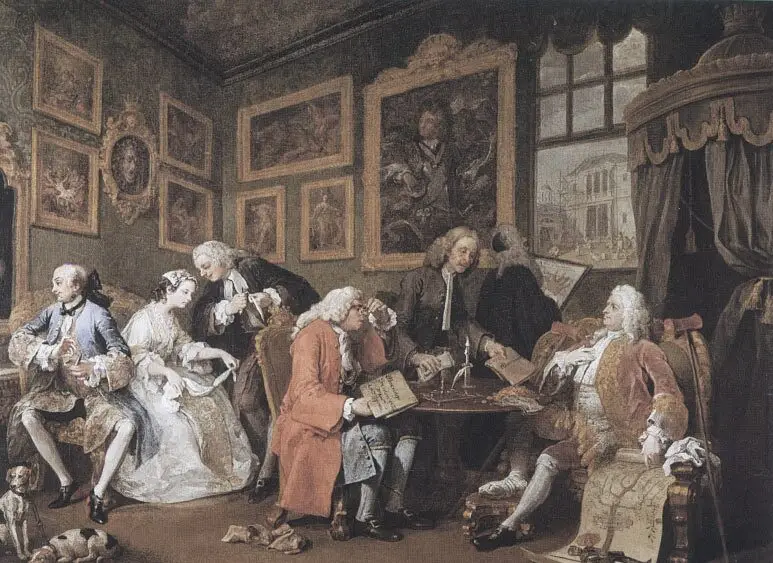
Madame de Chastellux, my aunt, who had followed Mesdames to Rome , had sent the papal dispensation necessary for my marriage (10). It stipulated that the marriage could only be celebrated by a priest who had either refused the oath (11) or had retracted it . This was, I believe, the first time the Pope made his opinion known on this matter. Upon learning of this, several priests in our neighbourhood retracted their oaths. It also happened that, by a remarkable coincidence, we had in our parish a nonjuring priest, Abbé Queyriaux. The newly appointed bishop had sent another priest to Médoc, but he was German and could not make himself understood by the peasants, so he withdrew. Finding itself without a priest, the parish asked the bishop for a new one. Being an unbeliever who didn’t consider differences in religious opinion important, the bishop asked the townspeople to persuade the former priest to return to his parish temporarily. The parish priest returned and bore his situation with piety and courage despite being often insulted by troublemakers.
All these circumstances, and, more importantly, the mutual feelings of M. de Lescure and myself, led my mother to conclude my marriage. When M. de Lescure arrived, he learned that our banns were published (12). He also saw the letter from M. de Mercy and decided to remain with us. Three days later, we got married on October 27. At the time, I was nineteen years old, and M. de Lescure was twenty-five. Three weeks later, he received news that his grandmother had suffered another attack. I accompanied him to be by her side.
During the course of two months, she was stuck in a precarious state between life and death. She suffered from constant vomiting, frequent apoplectic relapses, and an open cancer. She could barely speak, but when she did, it was to pray to God and to thank those who cared for her. She died with such an angelic courage that no one had ever seen before. Titles had been abolished and could no longer be engraved on her tombstone, but the peasants engraved her a fitting epitaph: “HERE LIES THE MOTHER OF THE POOR,” which was worth more than any title.
M. de Lescure deeply mourned the death of his grandmother. Eleven years before her passing, she had drafted a will in accordance with her circumstances at the time. Her will included several inheritances, but had she been able to take into account the debts her grandson had to pay and the effects of the revolution on her fortune, she would have likely changed her intentions. Although the will lacked the necessary formalities to be binding, M. de Lescure followed it to the letter. He even made sure that the servants who were not mentioned in the will but had earned her favour did not feel forgotten. Therefore, he gave them gifts in her name, as if she had specifically instructed him to do so.
The Order to Stay in Paris

In February of 1792, we decided to emigrate. We were accompanied by M. Bernard de Marigny, who was a relative and a friend of M. de Lescure. M. de Marigny was a naval officer and a Knight of Saint Louis, who had distinguished himself in his profession. He was very handsome, tall, and physically strong, with a cheerful, witty, loyal, and brave personality. He was the most obliging person I have ever met, always willing to do what pleased others. In fact, I remember he had some knowledge of veterinary science, and so all the peasants in the area would come to him when their cattle were sick. Despite his liveliness, he would sometimes be carried away by fits of anger that left him out of control. I will have many opportunities to talk about him, so I wanted to introduce him. At the time, he was forty-two years old.
We arrived in Paris. Some accidents with my carriage forced us to stop there for several days before continuing our journey. I could not be presented to the king. Since His Majesty had been in Paris, all presentations had been suspended (13)
I went to the Tuileries to visit the residence of Madame la Princesse de Lamballe (14), my mother’s closest friend. She welcomed me warmly, treating me like her own daughter. The following day, M. de Lescure also visited the Tuileries. The queen condescended to say to him, “I have heard that you brought Victorine, and although there is no court, I would like to see her. Let her come to Madame de Lamballe’s residence tomorrow at noon.”
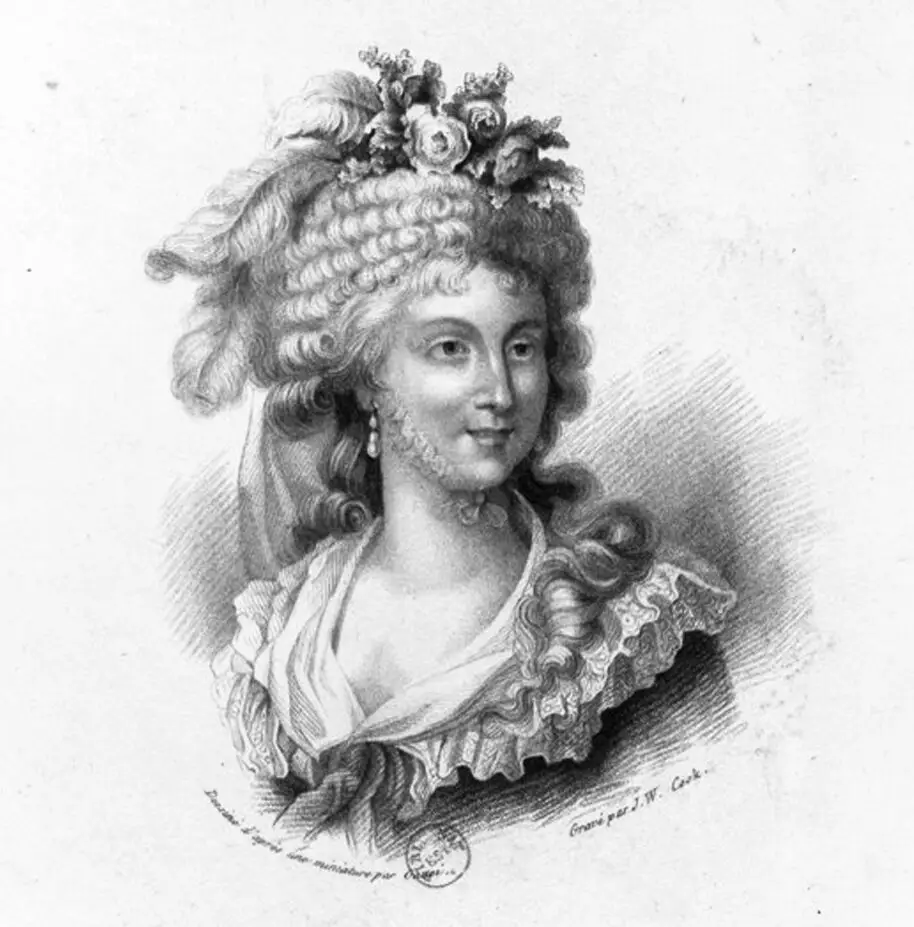
M. de Lescure brought me this flattering order, and I went to the residence of Madame la Princesse de Lamballe. When the queen arrived, she greeted me with a kiss. The three of us went to a private room where we exchanged a few kind words. Afterwards, Her Majesty said to me: “And you, Victorine, what do you intend to do? I imagine you came here to emigrate.” I informed her that it was M. de Lescure’s intention, but he would stay in Paris if he believed he could be useful to Her Majesty. The queen then reflected momentarily and seriously said to me: “He is a good subject. He has no ambition; let him remain.” I replied to the queen that her orders were laws. She then spoke to me about her children. “It has been a long time since you saw them. Come tomorrow, at six o’clock, to Madame de Tourzel’s (15); I will bring my daughter there.” At that time, she found consolation in personally overseeing Madame Royale’s education, and Madame de Tourzel was no longer responsible for the dauphin within the household.nAt that time, the queen found consolation in personally overseeing Madame Royale’s (16) education, and Madame de Tourzel was only responsible for the dauphin’s (17) household.
After the queen left, Madame la Princesse de Lamballe expressed her joy at the reception I had met with. I told her I greatly appreciated it and that M. de Lescure would certainly stay. She recommended the utmost secrecy about what had been said to me.
The next day, I went to Madame de Tourzel’s. The queen entered with Madame Royale. She came to me and said, in a low voice, while pressing my hand firmly: “Victorine, I hope you will stay with us.” I replied affirmatively. She pressed my hand again and went to talk with Mesdames de Lamballe and de Tourzel. With angelic attention and kindness, she raised her voice in the middle of the conversation to say: “Victorine is staying with us.” From that day on, M. de Lescure went to the Tuileries daily, and the queen personally addressed him each time
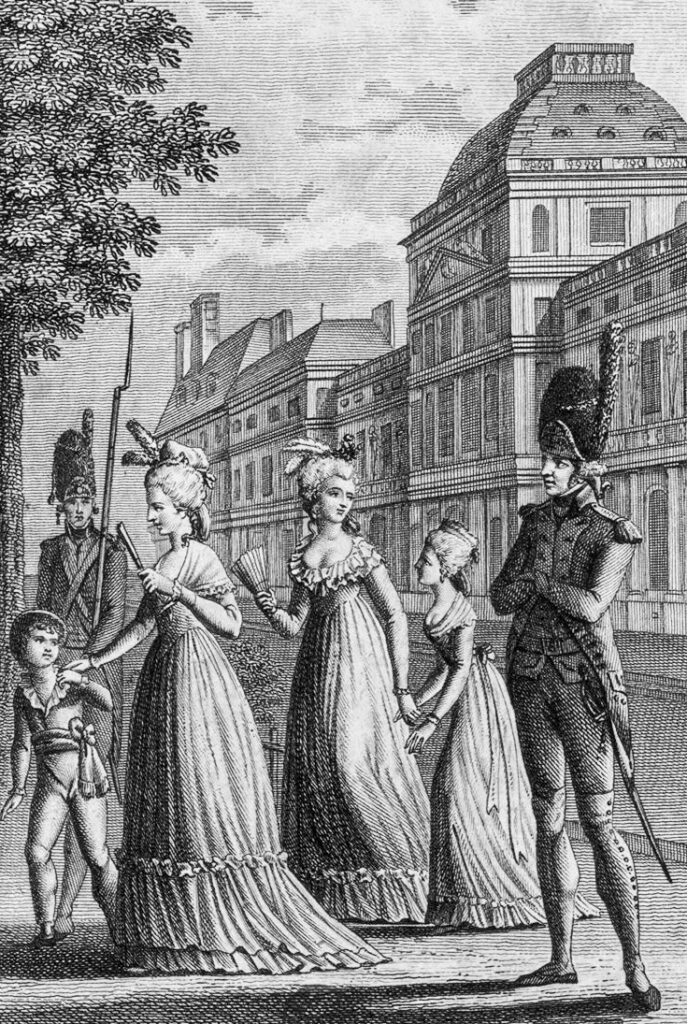
However, I confess that soon, I was no longer at ease. People were emigrating in droves, and M. de Lescure was criticised for not leaving. It seemed to me that his reputation would suffer if he did not follow the prevailing current. Upon coming to Paris, he had announced his plan to emigrate, and it happened that he changed his mind precisely two days after the decree for confiscating the property of the emigrants was issued (18). He was receiving strongly worded letters from our friends and family, which made me feel dreadful. In my anxiety, I asked Madame de Lamballe to speak with the queen again. Her Majesty instructed her to repeat word for word, and her response was, “I have no new message to convey to M. de Lescure. It is his responsibility to seek guidance from his conscience, sense of duty, and honour, but he should keep in mind that the defenders of the throne are always at their rightful place when they are close to the king.” I then became reassured, confident that the Princes would approve of those who stayed to defend the king. After all, their cause was the same, and they were in constant communication.
As soon as M. de Lescure learned of the queen’s response, he did not hesitate.
“I would be contemptible in my own eyes,” he said, “if I hesitated, even for a moment, between my reputation and my duty. I must, above all, obey the king. I may suffer for it, but at least I will be free of self-reproach. I have immense respect for the émigrés, and I believe they would act as I do if they were in my place. I hope I can prove that by staying, it is neither out of fear nor avarice and that I will face as much adversity here as they do over there. If I am not given the opportunity, and if my orders remain unknown to the public, I will have sacrificed my honour to the king, but I will have only done my duty.”
Period Leading Up to August 10, 1792

Two months later, M. de Calvimont Saint-Martial came from Koblenz to spend a few days in Paris. I obtained permission to have him inform my uncle, the Duke of Lorges, that M. de Lescure had special orders.
M. de Marigny, seeing that M. de Lescure was not leaving and that he was constantly at the château, told him that, without demanding any confidence, he esteemed him too much not to follow his fate.
We vouched for him to Madame de Lamballe, and she arranged for him to receive the order to stay as well. She entrusted M. de Lescure with this, but strict secrecy was always advised to avoid any indiscreet comments that might raise suspicion in the National Assembly.
We resided at the Hôtel de Diesbach on Rue des Saussayes (19) Our life was very secluded and, due to my youth, I did not receive anyone. M. de Lescure frequently visited the Tuileries. When he was concerned about any disturbance, he would spend the entire day there.
On June 20th, I was very frightened. I was on my way to see Madame la Princesse de Lamballe. I was alone in a carriage, dressed in court mourning due to the empress’s death (20), which had already exposed some people to the insults of the populace. When I arrived at the Carrousel, there was a large crowd, and my coachman could not move forward. I witnessed the mob disarm and mistreat the king’s guards, and the gates of the Tuileries were closed; no one could enter. So, I decided to withdraw without being noticed.
The entire summer passed much the same way. M. de Lescure was always at the Tuileries or in public places. He was even among the mob in disguise to better judge the state of the public mind. As for me, I avoided society and almost exclusively went to Madame la Princesse de Lamballe’s. I witnessed all her anxieties and sorrows; never was there a person more courageously devoted to the queen. She had made a sacrifice of her life. Shortly before August 10, she told me: “The greater the danger, the more strength I feel. I am ready to die; I fear nothing.” She had no thought that was not for the king and queen. Her father-in-law, the Duke of Penthièvre, adored her. She had lavished the most tender care on him, and he died from the grief he felt over his daughter-in-law’s cruel fate.
Around July 25th, Madame de Lamballe told me that Baron de Vioménil (21), today a Marshal of France, had arrived from Koblenz and was going to command the gentlemen who stayed near the king. At that moment, he came to her residence. She then informed him that M. de Lescure had received orders and recommended him to his care.
On July 29, my father, mother, and a few other family members arrived in Paris. They were fleeing Médoc on account of the scenes that had just occurred in Bordeaux, where two priests had been massacred (22).

On August 8, we witnessed a horrible event taking place on our very street. Across from our hotel lodged a priest who traded in leather. He had stirred up the people in his neighbourhood by saying one day, “that assignats would increase the price of shoes, and soon they would cost 22 francs.” From that moment, he was accused of hoarding. When the next cart with leather arrived for him, a man in the National Guard, a woman, and some children stopped the cart, shouting: “À la lanterne ” (23) The priest went down to pacify them, but his efforts were in vain. They insisted on bringing the leather to the nearby section (24), and he agreed to accompany them.
We had gone for a walk in the Champs-Élysées. On returning, we saw the street full of people, but the commotion was not very great. No sooner had we entered the hotel than the shouting began. The priest was at the section office, but the crowd wanted him handed over to them. Some administrators wished to save him, others opposed it. As we made our way through the crowd, we witnessed them breaking the windows of a lemonade vendor who was accused of being aristocratic. Surprisingly, no one paid us any attention. Shortly afterwards, the unfortunate priest was thrown out the window, and the mob tore him to pieces.
On August 9, M. de Grémion, a Swiss officer of the king’s Constitutional Guard (25), arrived at our hotel in the evening to occupy a reserved room. Fortunately, the neighbours did not notice.
It was rumoured that there would be a commotion the following day. M. de Lescure was preparing to spend the night at the château when M. de Montmorin arrived (26). He served as the governor of Fontainebleau and as a major in the Flanders regiment. The king held him in high regard due to his exceptional virtues and he had remained in Paris by his orders. “There’s no point in going to the château tonight,” he said. “I just came from there. The king is certain that they won’t attempt to attack until the 12th. There will be noise tonight, they expect it, but it will be at the Arsenal. The people wish to seize the powder there, and five thousand men of the National Guard are ordered to oppose it. So, don’t worry, no matter what you hear. The château is safe. I’m only returning there because I’m having supper with Madame de Tourzel.”
Like the court, we were lulled into a false sense of security.
Notes
(1) “Monsieur” was a designation traditionally reserved for the eldest brother of the reigning king. The first instance of its use was Gaston, Duke of Orléans, brother of Louis XIII. During the reign of Louis XVI, the tile was held by Louis Stanislas Xavier, who later became King Louis XVIII.
(2) Marie Louise Thérèse Victoire de France (1733-1799) was the fourth daughter of King Louis XV and Queen Maria Leszczyńska. Known for her piety and charity, she lived a relatively quiet life at the court of Versailles, deeply involved in religious and charitable activities. After the outbreak of the French Revolution, she fled to Italy, where she lived in exile until her death.
(3) “Mesdames” refers to the paternal aunts of Louis XVI, the daughters of King Louis XV. These royal ladies were collectively known as “Mesdames Tantes” at the court. Specifically, in 1789, the text refers to Madame Adélaïde (1732-1800) and Madame Victoire (1733-1799).
(4) Louis-Marie de Lescure’s mother, Jeanne de Durfort-Civrac, was the sister of Victoire’s mother, Marie-Françoise de Durfort-Civrac. Therefore, the Marquis de Lescure and his wife, Victoire de Donnissan, shared the same maternal grandparents, making them first cousins.
(5) The “Princes” in the context of the French Revolution typically refers to the brothers of King Louis XVI who were prominent leaders of the counter-revolutionary movement. The two princes were Louis-Stanislas-Xavier, Comte de Provence (later King Louis XVIII) and Charles-Philippe, Comte d’Artois (later King Charles X).
(6) In the context of the time period, the term “patriotes” was used to talk about supporters of the revolution who advocated for republican ideals.
(7) In the 18th century, “apoplexy” referred to what we now commonly call a stroke, a sudden loss of consciousness or neurological function due to a cerebral haemorrhage or blockage of blood flow to the brain.
(8) The Count of Mercy-Argenteau, born Florimond Claude, Comte de Mercy-Argenteau (1727-1794), was an Austrian diplomat and ambassador to France. He played a significant role in the politics of the late 18th century, particularly in fostering the alliance between Austria and France. He was a trusted advisor to Empress Maria Theresa and later to her son, Emperor Joseph II.
(9) Prince Wenzel Anton von Kaunitz (1711-1794) was an influential Austrian statesman and diplomat who served as the Foreign Minister of the Habsburg Monarchy for nearly four decades. He orchestrated the diplomatic revolution of 1756, which allied Austria with France against Prussia. Kaunitz was known for his significant administration reforms and efforts to modernise the Austrian state.
(10) A papal dispensation was needed for the marriage of Victoire de Donnissan and the Marquis de Lescure because they were first cousins, and the Catholic Church prohibits marriages between close relatives for obvious reasons (see the Habsburg Chin)
(11) Enacted in April 1790, the Civil Constitution of the Clergy (Constitution civile du clergé) sought to bring the Catholic Church in France under state control. It required all clergy to swear an oath of loyalty to the state, known as the Serment civique. Priests who took this oath, known as jureurs or constitutional priests, were seen as supporting the Revolution and its principles. Those who refused, called réfractaires or nonjuring priests, remained loyal to the Pope and traditional Church authority, often facing persecution, arrest, or exile for their refusal.
(12) In the context of a Catholic wedding, “banns” refer to the public announcement of a couple’s intention to marry, made in their parish churches on three consecutive Sundays or Holy Days of Obligation. This practice, known as “publishing the banns,” aims to inform the community and give anyone the opportunity to raise any legal or canonical impediments to the marriage.
(13) The French royal family was confined to the Tuileries Palace in February 1792, mainly due to the loss of goodwill following their failed escape attempt to Varennes in June 1791. This ill-fated flight severely damaged their reputation and eroded any remaining trust the public had in them. The attempt to flee was seen as a betrayal of the revolution and a clear indication that the king and queen were unwilling to accept the new constitutional order. As a result, revolutionary leaders imposed strict surveillance and restrictions on the royal family as public sentiment turned increasingly hostile.
(14) Marie Thérèse Louise of Savoy, the Princesse de Lamballe (1749-1792), was a close friend and confidante of Queen Marie Antoinette. As a member of the French court, she held the position of Superintendent of the Queen’s Household. Their close relationship sparked rumours and scandals, including allegations of a lesbian affair. During the French Revolution, her loyalty to the queen and the royal family made her a target of hostility.
(15) Madame de Tourzel, born Louise-Élisabeth de Croÿ de Tourzel (1749-1832), was a French noblewoman who served as the governess to the children of King Louis XVI and Queen Marie Antoinette.
(16) Marie-Thérèse Charlotte (1778-1851), given the title of Madame Royale, was the eldest daughter of King Louis XVI and Queen Marie Antoinette.
(17) The Dauphin was the title given to the heir apparent to the French throne. In February 1792, the Dauphin was Louis-Charles (1785-1795), the second son of King Louis XVI and Queen Marie Antoinette.
(18) The decree for confiscating the property of the emigrants (Décret de confiscation des biens des émigrés) was issued during the French Revolution to address economic needs and political objectives. Proposed by Bertrand Barère, it targeted nobles and royalists who fled France, deeming them traitors. Economically, the confiscated wealth provided crucial revenue for the financially struggling revolutionary state. Politically, it aimed to punish the émigrés, diminish aristocratic power, and support revolutionary principles of equality and anti-aristocratic sentiment. This measure helped consolidate the revolutionaries’ power and sustain their cause.
(19) In 18th-century Paris, “hôtel” referred to grand townhouses owned by aristocrats and wealthy families.
(20) Empress Maria Luisa of Spain (1745 – 1792) was married to Marie Antoinette’s brother Leopold II, Holy Roman Emperor. Her husband passed away on March 1, 1792, leaving her a widow just months before her own death on May 15, 1792. In June 1792, the French court was mourning both their deaths.
(21) Charles Joseph Hyacinthe du Houx, Baron de Vioménil (1734-1827), was a distinguished French military officer known for serving during the American Revolutionary War and the French Revolutionary Wars. He played a crucial role in the Siege of Yorktown in 1781 under General Rochambeau, contributing to the American victory
(22) 14 of July 1792, two nonjuring priests were beaten and killed by the crowd
(23) Emerging around the storming of the Bastille in July 1789, ” À la lanterne ” is a phrase used by the population to call for the hanging of perceived enemies, such as aristocrats or counterrevolutionaries, from street lanterns.
(24) In 1792, the Paris Sections were administrative divisions of Paris created to facilitate local governance and revolutionary activities. Each of the 48 sections acted as a local council, organising civic duties, distributing resources, and mobilising citizens for political action and military defence.
(25) Formed in March 1792, the King’s Constitutional Guard, was established to protect Louis XVI and his family. Comprising 1,200 infantry and 600 cavalry, it was commanded by the Duc de Brissac and stationed near the Tuileries Palace. Predominantly formed of former nobles, the Guard quickly became a target of suspicion and hostility from revolutionaries, who viewed it as a remnant of aristocratic privilege. This mistrust culminated in the Guard’s dissolution on May 29, 1792 A few of the leaders of the subsequent civil war were members of the guard.
(26) Armand Marc, Comte de Montmorin de Saint-Hérem (1745–1792), was a French statesman who served as Minister of Foreign Affairs under King Louis XVI. A loyal supporter of the king and Jacques Necker, Montmorin played a significant role in the court during the early stages of the French Revolution. Despite resigning in October 1791, he continued to advise the king.

